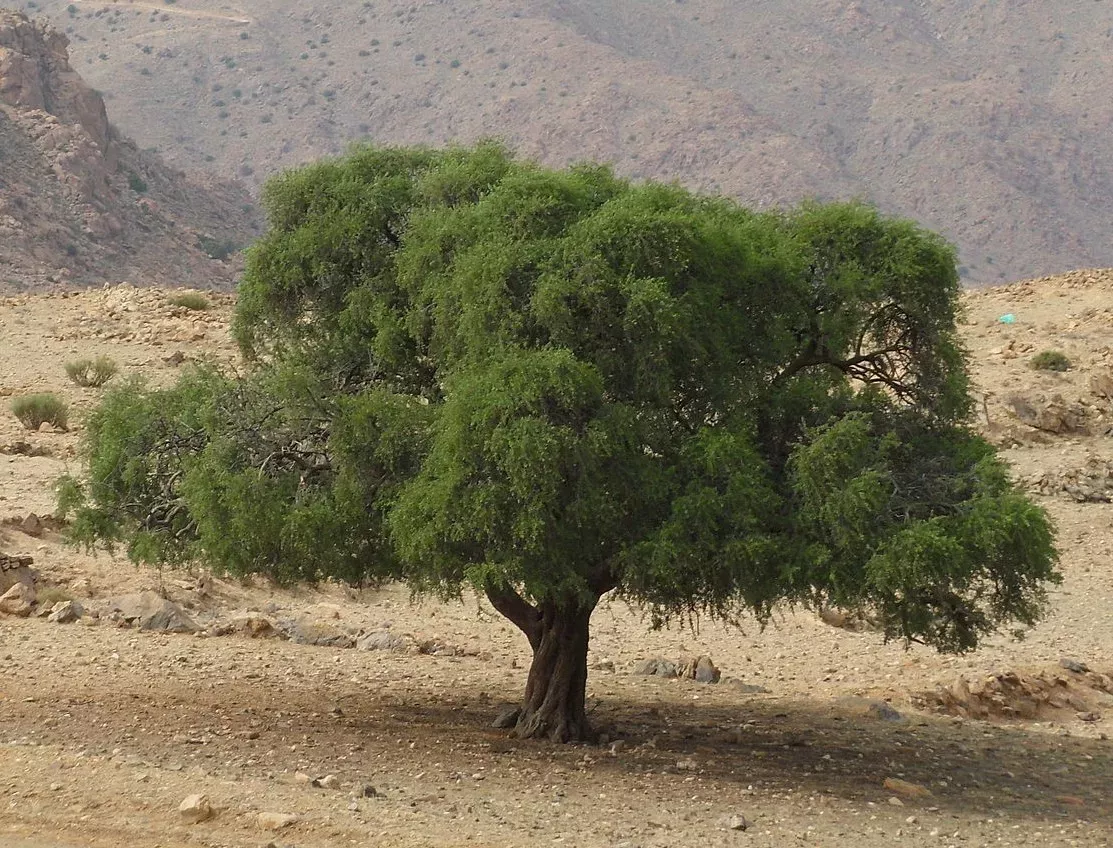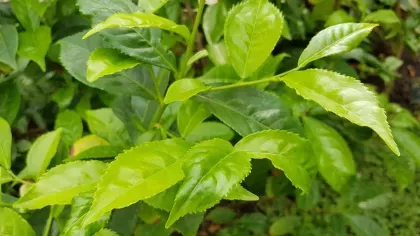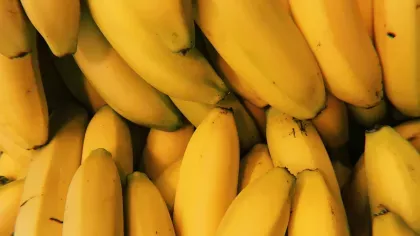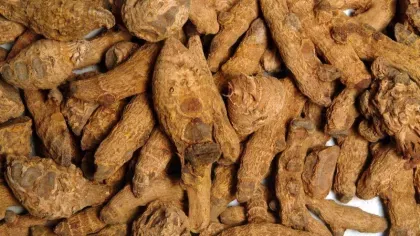
Argan tree
On this page
Argan oil is hailed as one of the best natural ingredients for your hair and skin.
It comes from the fruit of the argan tree and has been used for centuries in beauty products.
Plant description
Argan trees are short with a wide spreading canopy of small, oval, leathery leaves. Its trunk is twisted, and its branches bear thorns. Argan tree flowers are small and yellow-green, and its fruits have a thick peel and soft pulp that surrounds a hard nut containing oil-rich seeds.
Plant uses
Beauty and cosmetics
Argan oil is rich in natural vitamins, essential fats, and antioxidants that help moisturise, support, and strengthen hair and skin.
Food and drink
Argan oil is used in Moroccan cooking and frying for its rich, nutty flavour. It is also used to add flavour to salad dressings, and it is stirred into couscous.
The soft pulp surrounding the nut and seed paste from which the oil is extracted are used as animal feed for sheep, goats, camels, and cattle. Argan tree fruits and leaves are also consumed by livestock.
Health
Argan oil was used in Berber folk medicine for centuries to treat skin conditions, rheumatism, and heart disease.
Materials and fuels
Berbers in some parts of Morocco used the argan tree for timber and fuel.
Did you know?
In some parts of Morocco, goats can be found perched on the branches of argan trees, nibbling away at their fruit and leaves.
Kew’s second Director, Sir Joseph Hooker, had a keen interest in argan trees. In a letter to his wife from May 1871, he wrote about these “remarkable little trees” and was struck by the sight of tree-climbing goats.
To extract argan oil, the soft pulp surrounding the hard nut is removed first. The nut is then cracked to reach the oil-rich seeds which are roasted and ground to a paste. The paste is squeezed to extract the oil.
Argan trees are well adapted to semi-desert environments; they have long root systems that spread deep into the soil in search of water, and their small leaves help reduce water loss.
It takes an argan tree over 50 years to develop fruit that are ready to be harvested.
Where in the world?

On chalk or limestone in semi-desert regions.
Find it in our gardens
Kew Gardens
A botanic garden in southwest London with the world’s most diverse living plant collection.
Location
Temperate House and behind the scenes in our Tropical Nursery
View map of Kew Gardens

